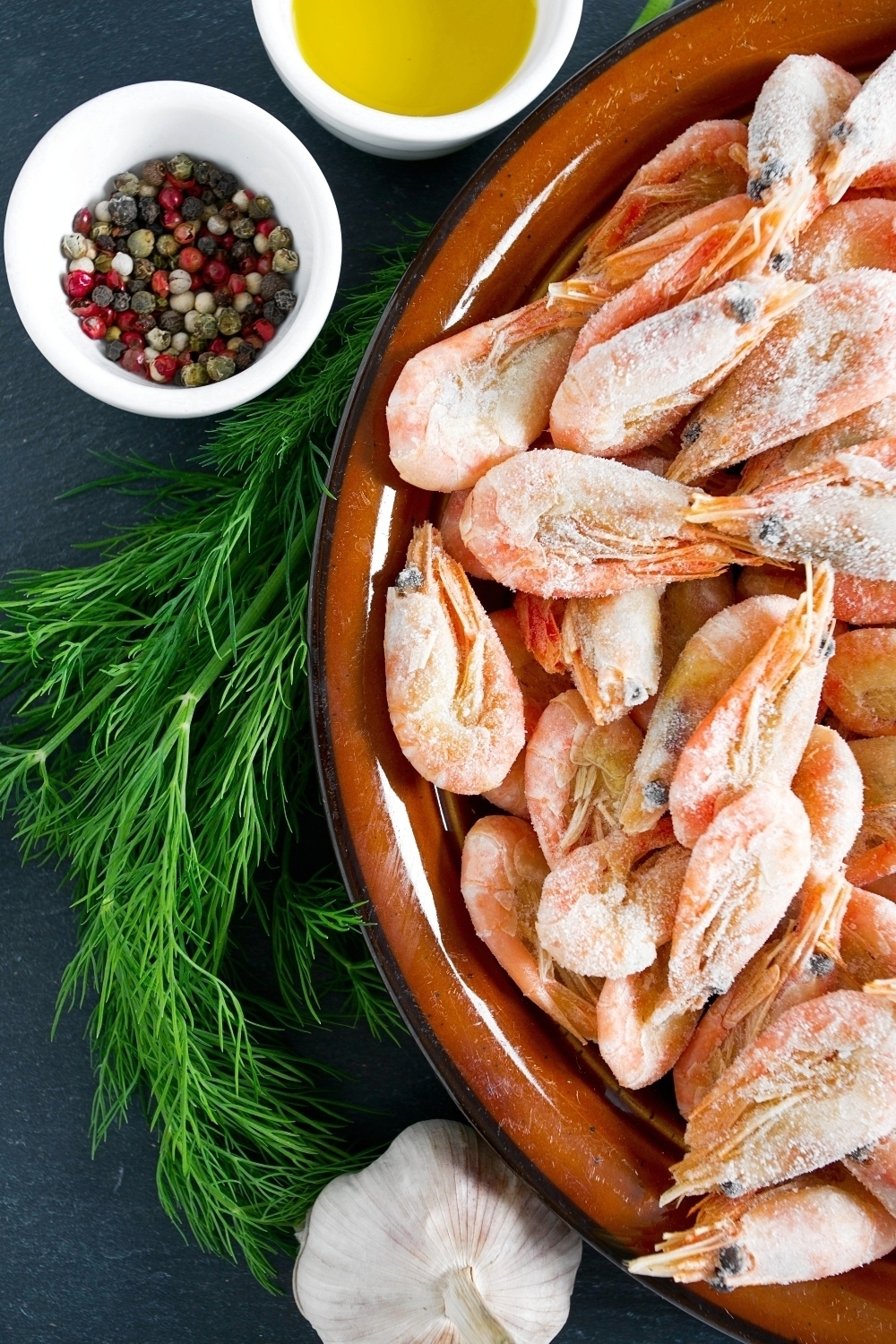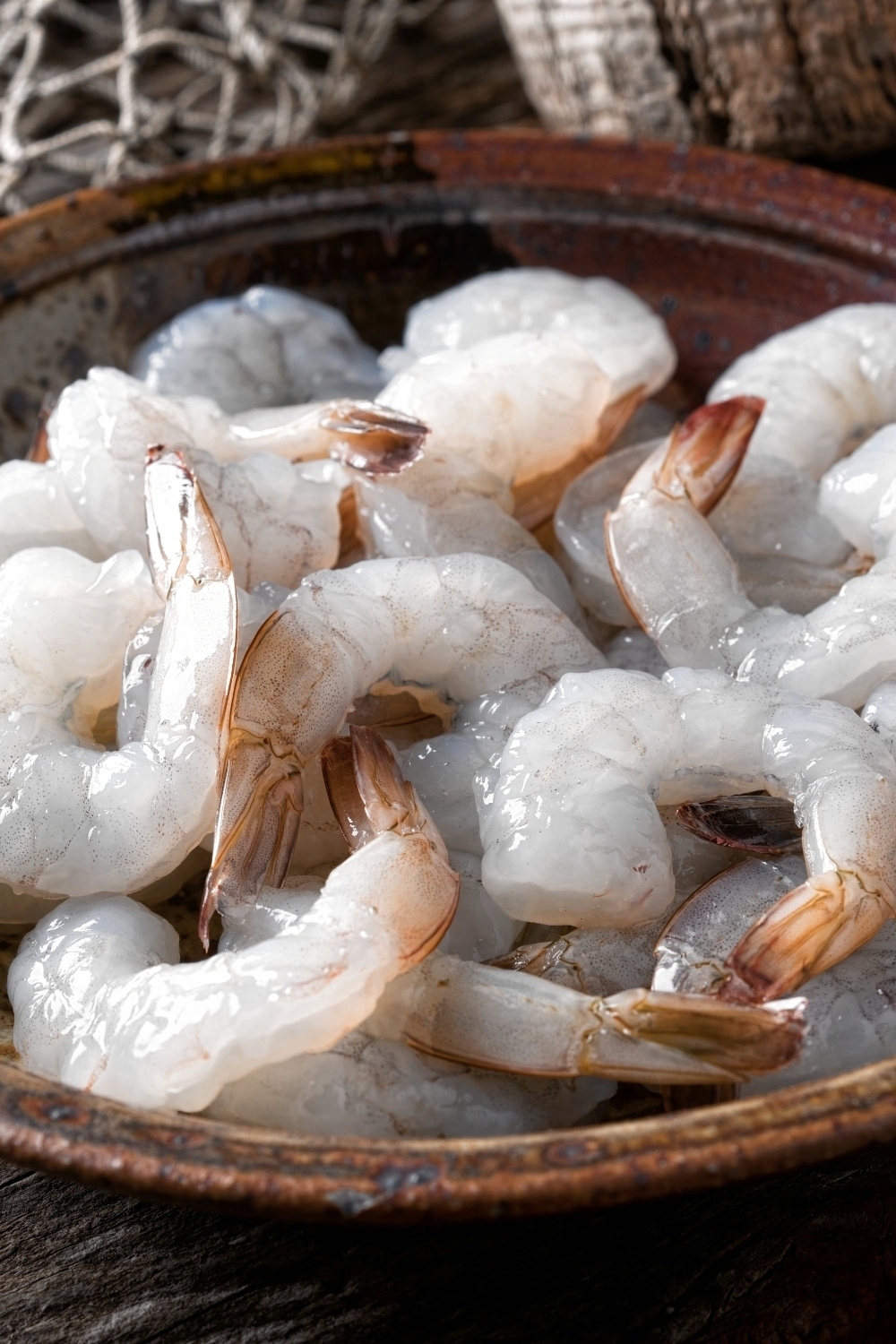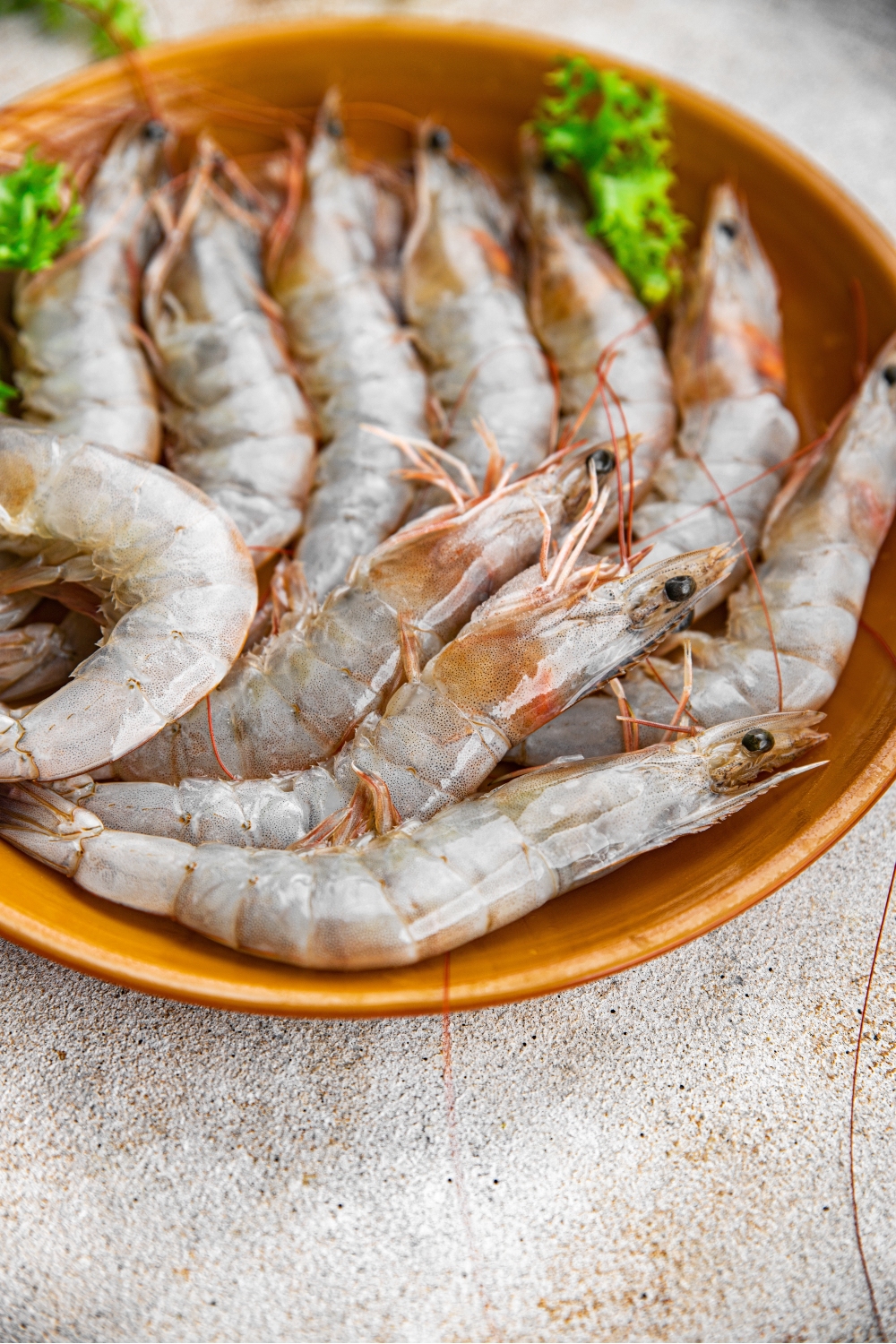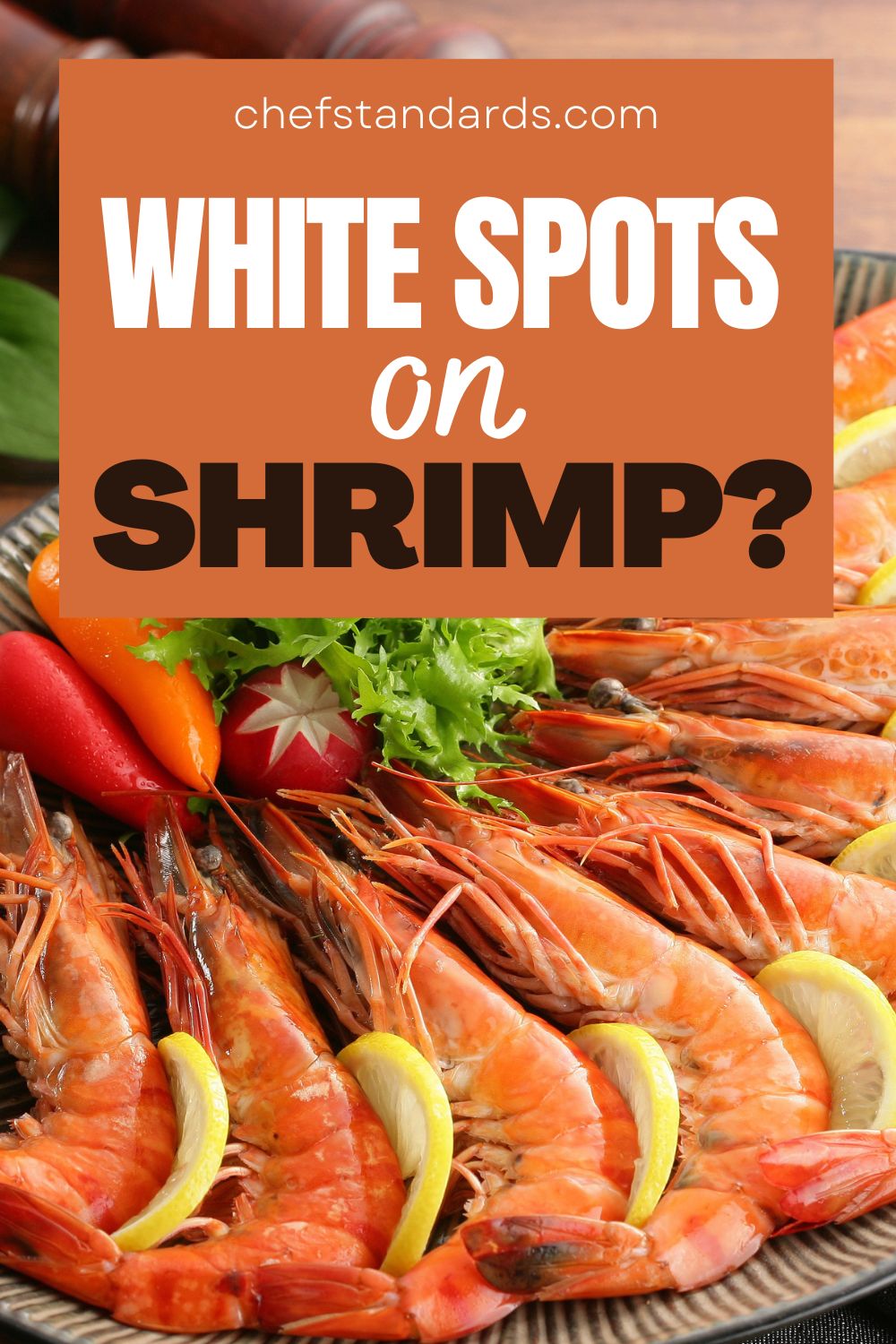All foods come with its pros and cons, and shrimp is no exception. The pros of shrimp is that it is one of the most delicious crustaceans, very versatile, and quite nutritious as well.
However, as with most types of fish and seafood, shrimp is a very sensitive food, i.e., it can easily go bad if not stored and handled correctly.
Because of that, it is important to know the proper storage techniques, as well as some signs of spoilage and loss of quality. One of the signs that is not fully understood by many people is white spots on shrimp.
It is definitely a sign that something is not right, but is it a threat to your health? Let’s find out!
What Causes White Spots On Your Shrimp?
There are 3 main causes of white spots on shrimp, and they all act slightly differently on this particular type of seafood. So let’s see what that means.
1. Freezer Burn

The most important cause of white spots on shrimp is definitely freezer burn. If you’ve ever frozen your cooked chicken or some other type of meat or seafood, you surely know what I am talking about.
Freezer burn happens when the food is not properly stored in the freezer when the temperature is unstable, or if the food has been left in the freezer for too long.
In these situations, the air in the freezer causes oxidation and dehydration of the food, leading to a deteriorated texture that is somewhat dry and tough.
Also, freezer-burned shrimp can have an unusual smell and taste, gritty and stiff consistency, rubbery mouthfeel, and, of course, white spots.
However, I have to emphasize that white spots caused by freezer burn can only be found on shrimp meat or the edges of the shrimp. That way you’ll know what the cause is.
Fortunately, freezer-burned shrimp is perfectly fine for eating, at least in terms of safety. However, in terms of texture and taste, things are not so perfect, but that can also be fixed to some extent. But more about that later.
Finally, I will provide you with a few helpful tips in order to avoid freezer burn in the first place:
• Choose air-tight containers or freezer bags and properly seal them.
• Put them in cold areas where there are no temperature fluctuations (0°F is ideal).
• Do not open the freezer if you really don’t have to, in order to avoid temperature fluctuations.
• Don’t keep frozen for more than 6 months.
• Like it is possible to refreeze salmon, it is also possible to refreeze shrimp, but if you want to minimize the risk of freezer burn, I would suggest against that.
2. White Spot Syndrome (WSS)
White spot syndrome (WSS) is a highly contagious viral disease that affects crustaceans, particularly shrimp.
The disease is caused by a virus called White Spot Syndrome Virus (WSSV). The symptoms of white spot syndrome are characterized by the appearance of small, milky white spots on the exoskeleton (shell) of infected shrimp.
Hence, the name “white spot syndrome”. These white spots are particularly noticeable on the cephalothorax (head and thorax) and the tail of the shrimp.
All of this may sound terrifying at first, but the real truth is a bit different. Actually, if you end up with shrimp that suffers from this disease, it will be perfectly fine to eat it because it does not cause any problems to human health.
What is even more surprising, this disease doesn’t even affect the flavor and texture of the shrimp. Only its appearance is different.
However, it is really rare that shrimps with this problem even get to the market because, once they get this disease, it spreads rapidly within a shrimp farm, and few shrimps survive that.
But if you see those white spots in some cases, know that there is nothing bad in consuming the shrimp.
3. White Glazing

Glaze is a protective layer that is commonly used on the fish to retain its freshness and protect it from freezer burn. Although shrimp is not a fish, it is seafood, and it is proven that this glaze can successfully protect seafood as well.
In terms of shrimp, that glaze is there primarily to keep the moisture in after the thawing process. It is actually a layer of water that is formed on the surface of the frozen shrimp, and it has a white appearance.
Because of that white appearance or white spots, some people may believe that there is something wrong with their shrimp. However, once the shrimps defrost completely, those white spots will disappear.
So, it is crucial that you wait to be sure what is the cause of those white spots on the shrimp.
If it is white glazing, it won’t affect the safety nor the flavor and texture of the shrimp at all, so you will be able to safely continue cooking it or do with it whatever you want.
What To Do About These White Spots?
You already know that the white spots caused by white glazing will immediately disappear after complete thawing. However, white spots caused by freezer burn won’t, and they will cause your shrimps to lose some of their flavor and texture.
But is there anything you can do about that? There certainly is, and I am here to reveal to you a few tips and tricks.
• If your shrimps are freezer-burned, immerse them in cold water for a few minutes after the freezing process, in order to hydrate them to some extent.
• When dealing with freezer-burned shrimps, choose recipes that use steam as the cooking method for shrimps.
• If only certain parts of the shrimp have white spots, simply cut off those damaged parts and use the rest of the shrimp in your recipe.
• If that is not possible, i.e., if the whole shrimp is covered in white spots, avoid serving them alone because of their appearance, dry texture, and deteriorated flavor.
• Rather choose recipes that have stronger flavors, i.e., involve strong sauces, herbs, and spices, which will be able to mask the deteriorated flavor.
• Also, slowly cook them at lower temperatures to avoid making them even drier.
• If you are marinating shrimp, choose bold marinades to help disguise flavor and rehydrate the meat of the shrimp. Some popular ingredients include soy sauce, lemon juice, and garlic.
• Some of the most popular recipes for shrimps that have suffered from freezer burn include soups, stews, fried rice, and pasta dishes (like shrimp scampi or shrimp alfredo).
• Finally, check if your shrimp is cooked properly.
Differences Between Harmless White Spots And Spoiled Shrimp

Signs of spoiled shrimp and those that is affected by freezer burn can sometimes be quite similar. Because of that, it is very important to know how to recognize truly bad shrimp that can be a threat to your health.
• Color: As you can easily conclude, if any of these problems explained above, occur, you will see just white spots on the surface of your shrimp. In the case of white glazing, those white spots will disappear after defrosting.
However, if your shrimp is really spoiled, there will be major changes in color. It will be grayish, yellowish, or even black in some cases.
• Appearance: If your shrimp is just freezer-burned, it will have a dry or shriveled appearance due to loss of moisture.
When it comes to truly spoiled shrimp, it will most probably have patches of mold or other growth on the surface.
• Texture: In case of freezer burn, the shrimp will become tougher and rubbery, making it less appealing to eat.
On the other hand, spoiled shrimp may become slimy or sticky to the touch, which is caused by bacterial growth.
• Odor: When freezer-burned, shrimp won’t have any specific smell, i.e., it will probably be blunt.
However, when spoiled, shrimp will emit a strong, unpleasant, and sour odor.
Final Words
So, what if you notice white spots on shrimp? Although there are 3 possible causes of this color change of the shrimp, not one of them presents a threat to your health.
If it is caused by white glazing, after the thawing process, the surface of the shrimp will be clear and there won’t be any consequences in terms of safety, flavor, or texture.
White spots caused by white spot syndrome (WSS) stay on the surface of the shrimp, but they are not dangerous to your health, and they are not the cause of flavor degradation.
Finally, freezer burn is the only cause of white spots that can damage the flavor and texture of shrimps to some extent, but they are still safe to eat.

